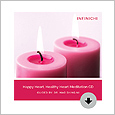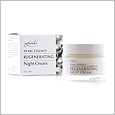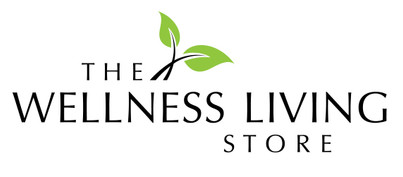What's in a Face?
Sep 9th 2020

Chinese face reading can be lots of fun, and we can choose to take it seriously … or not! Putting modern skepticism aside, let’s consider the idea that the shape of our face and our facial features may very well be a reflection of our own personal element.
Ancient Chinese Taoist monks had a name for facial diagnosis—they called it Mien (face) Shiang (reading).
Even today, modern TCM practitioners use the subtle clues that they derive from the way we present ourselves in addition to Mien Shiang, our facial features, to help them discern our Wu Xing–our Five Element personality type that influences our behavior as well as our physical and spiritual health.
In TCM theory, our personality is dominated by one of five elements: Wood, Fire, Earth, Metal, and Water. Although most of us can define ourselves as having the traits of more than one element, there is always one that prevails, so let’s look at our own faces, consider the characteristics of each of the elemental types, and see if we can figure out which one fits us best.
WOOD
The face shape that is associated with the Wood Element is a rectangle. Woodies are usually competitive, physically active, and their energy, their Qi, flows upward through their body. A Wood face and a Wood body are longer than they are wide. Their eyebrows are defined, and their eyes are focused. All Wood people have a temper, and when they are angry, their jaws become square and determined. Some Woodies are tall like a basketball player, and some are shorter and compact, like a gymnast, but all of them are strong and muscular with a complexion that tends toward olive.
FIRE.
Just as a flame is elongated and pointed, a Fire person’s face is oval and features a pointed chin and pointed eyebrows. Fire energy, or qi, races upward through their legs through their slim-hipped body and disperses through their chest and sparkling eyes. Some fire people often protect their Heart, their elemental organ, by slumping or slouching. Fire people are the charmers and entertainers of the world, and they are more likely than any of the other elements to have dimples, freckles, or cleft chins. Their complexion leans toward red and they sometimes appear flushed.
EARTH
The shape of the Earth Element face is usually round in children or square in adults, as wide as they are tall with fleshy lips, full cheeks and upper eyelids, and sometimes a double chin. Their skin is soft, and their complexion has golden tones. An Earth person’s body is soft even though they may be thin, and they are the world’s best huggers. Their Qi or life-force energy radiates from their belly and Stomach, which is their elemental organ, and flows toward the ground. Many of us will become more “Earth” and more nurturing as we age, and more likely to seek out comfort than competition or challenge.
METAL
Many fashion models are Metal people, with prominent bone structure, high cheekbones, and flawless, tight skin which is well suited to photograph. Metal people may also have high eyebrows which makes them appear reserved, but in truth, they are often very shy. They tend toward thinness and natural grace with tight bodies and elegant posture. Their Qi, or life force of the Metal Element does not flow in any one direction—instead, it flickers around their chest in the general area of the Lungs, their primary organ. A Metal person’s skin has a polish, a sheen, or a glow rather than a hue.
WATER
Water bodies have shape, in a woman it could be defined as having an hourglass figure, but Water people prefer hiding their sensual bodies in loose, flowing clothing. Their faces are full, especially in the lower cheeks, their jaw is determined, and they may have a prominent forehead. Their eyes are alert when they are startled, but soft and dreamy when they are relaxed. The Qi, or life force energy of Water people originates in the middle, then moves in slow, gentle, undulating circles around the body. Their skin tone tends toward blue.
Learning Taoist face reading requires months, if not years of study, and involves not only the shape of the face but also the ears, hairline, forehead, brow bones, eyes, cheeks, cheekbones, nose, philtrum, lips, mouth, chin, and jaw. We’ve lightly skimmed over the subject of Mien Shiang and haven’t touched on any of the other aspects of Chinese face reading like symmetry, moles or marks, or acquired characteristics … but just for the fun of it, decide which of the Five Elements you think is reflected in your face, and then take our Five Elements quiz, to see if you guessed right!
 |  |  |  |  |
| Five Elements of Health Capsules | Happy Heart, Healthy Heart Meditation | Regenerating Night Cream | Detox Bath | Adrenal Support |

